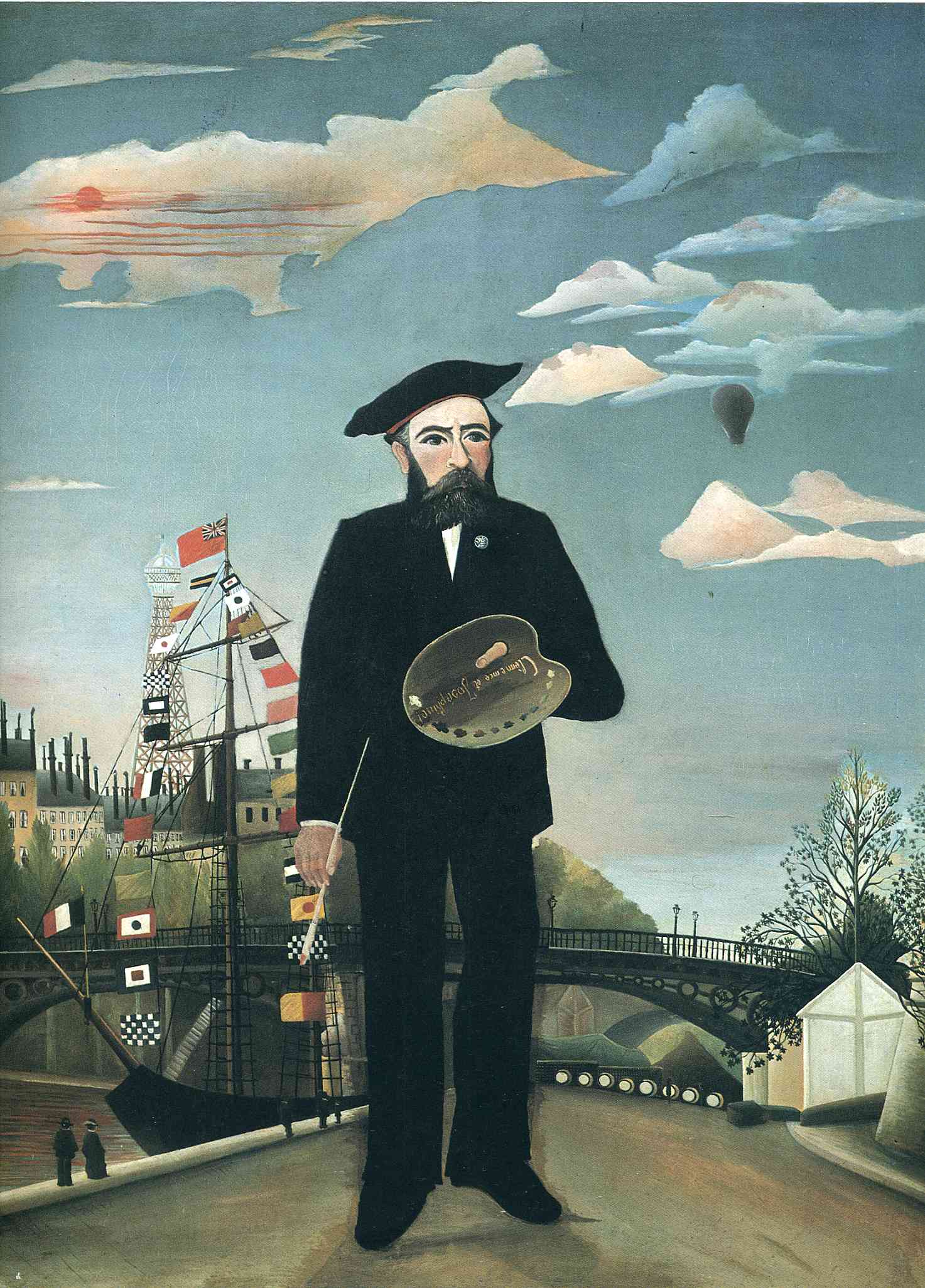Old Junier used to sell vegetables that he would buy every morning at a local Paris market. He had been a friend of the artist’s for many years; his wife used to cook for Rousseau. As the painter owed him some money and Mr. Junier had just bought a horse of which he was very proud, it was agreed that Rousseau would do a painting of it.
Rousseau worked from a photograph. He made several important changes, however, that reveal his creative process. He omitted a tree on the boulevard and played particularly with the size and position of the three dogs. These have a visual function. The fat black dog gives depth to the cart. We know that when Max Weber (the famous and important German sociologist, historian, jurist, and political economist) commented to Rousseau that the black dog was too big in relation to the overall scale of the painting, the artist retorted that his painting demanded this. The miniature dog, on the other hand, trotting in front of the cart gives a monumentality to the mare. She stands rather curiously on the tips of her hooves, thus highlighting the shadows cast on the ground. This mare, like a dancer on her points, seems almost suspended in space. Rousseau was very fond of this type of paradox, which makes some characters float in a purely pictorial space.
P.S. We love Rousseau! Most of all his fantastic jungles! You can see them here. <3


 Henri Rousseau
Henri Rousseau